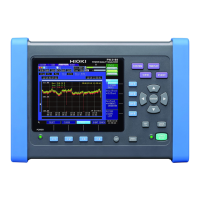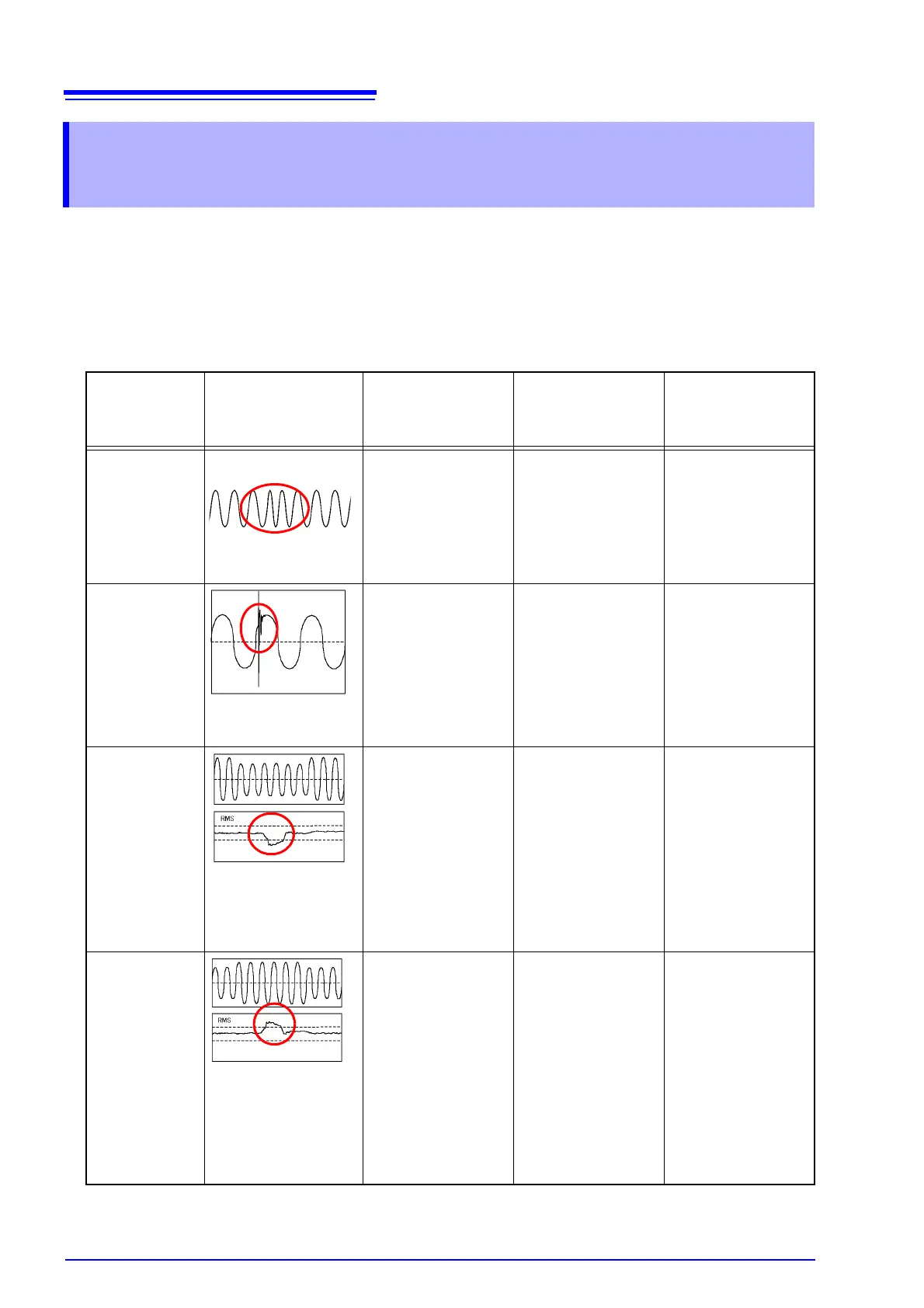Appendix 2 Explanation of Power Supply Quality Parameters and Events
A
4
Power supply quality parameters are necessary in order to investigate and analyze the phenome-
non of power supply problems*. By measuring these parameters, it is possible to assess power
supply quality. In order to allow the PW3198 to detect abnormal values and abnormal waveforms,
you set thresholds. When these thresholds are exceeded, events are generated.
*: Thresholds are set based on an estimation of abnormal values, so events do not necessarily indicate a
problem.
Appendix 2 Explanation of Power Supply Quality
Parameters and Events
Principal
parameters
indicating
power quality
Waveform Phenomenon Primary issues
PW3198 events and
measurements
Frequency
fluctuations
Occurs due to line
separation caused by
changes in the supply/
demand balance of
active power, the shut-
down of a high-capac-
ity generator, or circuit
issues.
Changes in the speed
of synchronized
motors may cause
product defects.
Events are detected
using frequency (Freq)
and frequency cycle
(Freq_wav). Measure-
ment items include
IEC61000-4-30 10-
second average fre-
quency and 10-second
frequency (Freq10s).
Transient
overvoltage
(impulse)
Occurs due to phe-
nomena such as light-
ning, breaker point
damage, or closure on
the circuit breaker or
relay.
Often occurs when
there is a radical
change in voltage or
when the peak volt-
age is high.
Close to the source of
the break, the device's
power is damaged
because of exception-
ally high voltages and
this may cause the
device to reset.
Events involving tran-
sients of 5 kHz or
more are detected
using transient over-
voltage. They can also
be detected as voltage
waveform distortions
using voltage wave-
form peak and voltage
waveform comparison
functionality.
Voltage dip
(SAG)
Most dips are caused
by natural phenom-
ena such as lighting.
When an equipment
fault is detected and
taken offline due to the
occurrence of a power
system ground fault or
short-circuit, a large
inrush current caused
by a motor startup or
other load can occur,
causing a temporary
voltage dip.
Dips in the supply volt-
age can cause equip-
ment to stop operating
or be reset, discharge
lamps to turn off, elec-
tric motors to increase
or decrease in speed
or stop, or synchro-
nized motors and gen-
erators to lose
synchronization.
Events are detected
using dips.
Voltage swell
(SURGE)
Swells occur when the
voltage rises momen-
tarily, for example when
a power line turns on or
off due to lightning or a
heavy load, when a
high-capacity capacitor
bank is switched, when
a one-line ground
occurs, or when a high-
capacity load is cut off.
This phenomenon also
includes voltage surges
due to grid-tied dis-
persed power supplies
(solar power, etc.).
A surge in voltage may
cause the device's
power to be damaged
or the device to reset.
Events are detected
using swells.

